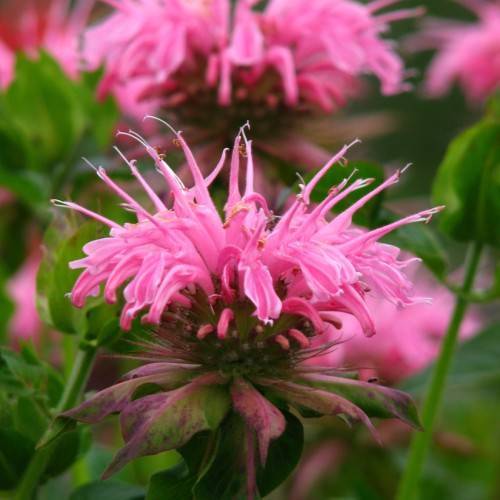
wild bergamot
Monarda 'Pink Supreme'
Cycle:
Herbaceous Perennial
Watering:
Frequent
Hardiness Zone:
4 - 8
Flowers:
Flowers
Sun:
Full sun,part shade
Leaf:
Yes
Growth Rate:
Low
Maintenance:
Low
Drought Tolerant:
Yes
Salt Tolerant:
Yes
Care Level:
Medium
watering
Wild bergamot (Monarda 'Pink Supreme') should be watered regularly but not often. Aim for about an inch of water each week, either from rainfall or supplemental irrigation. Water the plants deeply and less frequently to encourage strong root systems that will help the plants withstand periods of drought. Be sure to adjust watering based on weather and soil conditions. In general, during hot, dry weather, plants will require more frequent watering. Wilting or browning leaves are commonly indicative of the need for water.
sunlight
Wild bergamot (Monarda 'Pink Supreme') prefers full sun to part shade and should be grown in a spot that gets 5 hours of direct sun each day. It can tolerate a bit of shade during the heat of the day in hot climates but requires some sun for at least part of the day. For optimal growth, this plant species should receive maximum sunlight in the morning and early afternoon. In areas with strong afternoon sun, it would benefit from some afternoon shade to prevent sunburn. Wild Bergamot thrives in sunny, warm, well-drained soils and will do best when provided with plenty of sunshine.
pruning
Wild bergamot (Monarda 'Pink Supreme') is a generally easy-to-care-for flowering herbaceous perennial. It prefers full sun and moist, well-drained soils and can tolerate some drought once established. Pruning should be done once a year in the spring, just after flowering has finished. Deadheading the spent flowers and removing any brown and damaged leaves or stems can also help keep the plant looking its best and encourage bushy, dense growth. For wild bergamot, pruning should focus on cutting back long stems and lightly thinning out dense areas. It's important not to prune too much, as this could lead to a lack of flowers the following year.
